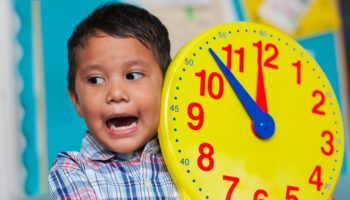How did the Environment Rating Scales evolve?
The family of Environment Rating Scales (ECERS, ITERS, FCCERS, & SACERS) initially grew out of my many years of experience teaching in different types of Early Childhood Education programs including as a Family Child Care provider, Parent CO-OP Preschool Teacher, Head Start teacher, Head Teacher of the four year old Laboratory Preschool Program at the University of California at Berkeley (where I got my MA and PhD in Child Development and Early Childhood Education) and finally serving as Director of Curriculum Development at the FPG Child Development Institute at the University of North Carolina at Chapel Hill, where I met my two co-authors, Dick Clifford and Debby Cryer, and our new 4th co-author of the ITERS-3, Noreen Yazejian.
During my many years of teaching as a classroom teacher in early childhood programs and a college professor teaching others how to become good observers and good teachers, I developed a number of widely used observation instruments that I did not publish. Now that I had my PhD and a position in a research institute that supported research and development, as well as colleagues Dick Clifford and Debby Cryer, who shared my interest in instrument development, the time was ripe for undertaking the rigorous task of developing standardized instruments. Over the many years that the 3 of us worked at FPG, we developed a family of scales that used the same 7 point Likert scale format, each scale for a different age group and/or program type. The FCCERS is for assessing Family Child Care Homes, the ECERS is for assessing preschool group programs. the ITERS is for group programs for infants and toddlers the FCCERS is for family child care programs. I developed the SACERS with 2 Canadian colleagues, for the care of school age children during out of school time.
What prompted the revisions (ECERS-3 and ITERS-3) and how do you feel they compare to the original ones?
Revisions are the result of concerns raised from use of the scale from many sources: by us and our employees as we used the scale out in the field, through ERSI (our consulting firm), as well as from scale users, generally both observers and those who had been observed in the US and abroad, from college professors and other trainers to people who had never seen the scale but feel that their program had been misjudged.
Can you tell me a little bit more about the 7 point Likert scale and why you chose it?
There are several different question/answer formats to choose from: • Yes or No, presence or absence format
• Three alternative choices: Yes–Some—No
• The Likert scale format that offers the possibility of additional quality levels, thus offer more precise scoring.We chose to use the 7 point Likert scale that gave us the possibility of a more nuanced scoring including: 1 (Inadequate), 3 (Minimal), 5 (Good), and 7 (Excellent). In addition, we gave precise indicators to look for under the key levels of 1, 3, 5 and 7 and a consistent rule for calculating the mid-point scores of 2, 4 and 6. This format gave us the possibility of greater specificity in our indicators and offered more precise guidance to the observers. It also made the scales a better guide for use in program improvement.




